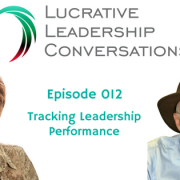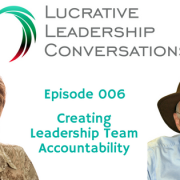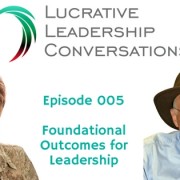012 | Tracking Leadership Performance
Welcome back to the Lucrative Leadership Conversation podcast. In season 1 of the podcast, we have covered the “6 Bold Steps” Gene Morton has developed that allow organizations to become both profitable and sustainable. Today, we discuss how to implement a successful performance tracking system and how it is worth your time and energy.
The 6 Bold Steps provide a strategic pathway for leadership teams to achieve clarity, focus, accountability, and commitment within their organizations.
Here’s a recap of each step along with links to the related episodes:
- In step 1, leaders agree to their own personal responsibilities to ensure decisions protect the organization’s best interest.
- In step 2, they craft a common language, which we call “outcomes, that expresses the core competencies synergistic with the strategic vision.
- In step 3, they negotiate who, on the leadership team, will have the primary accountability for designing and executing each outcome.
- In step 4, Working together, the leaders begin an intuitive process to collaborate and design a structure they are able to support and explain to others. Leaders decide their roles for each outcome and agree how and when communications occur that define future and past actions and decisions. They create the first drafts of the reporting structure.
- In step 5, leaders finish designing a strategic reporting structure. Engaging the entire organization in ongoing discussions improves the design. Conversations serve to clarify and reinforce the meaning of the outcomes that make the organization sustainable.
Most performance management systems focuses conversations on past results.
Failure is a part of the learning and improving process.
You cannot hold people accountable for what they cannot control. Don’t waste energy holding them accountable. It’s too late. Correct the situation and work on determining those accountabilities up front and know who is in charge of what.
The goal of tracking performance is to discover the best practices for the delivery of each outcome to the customer. So, creating a successful performance tracking system (step 6) ties all the way back to defining the organization’s critical outcomes (step 2). Read more →




